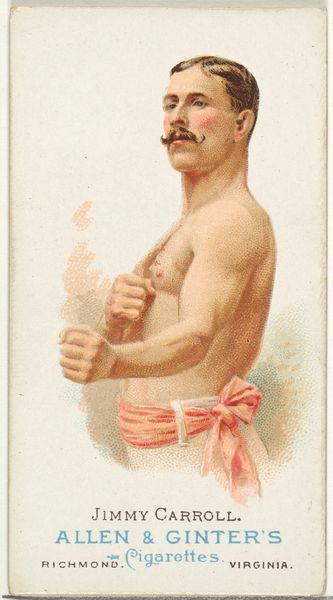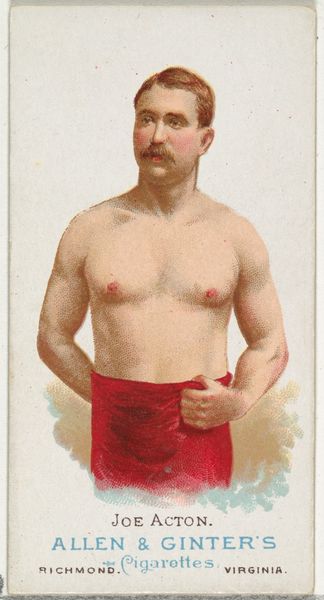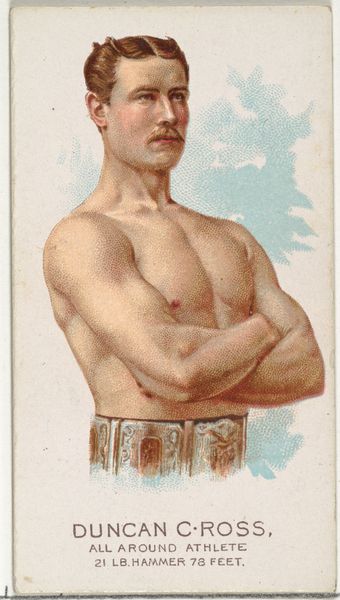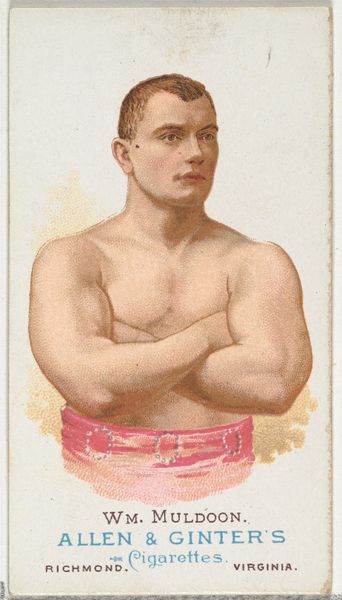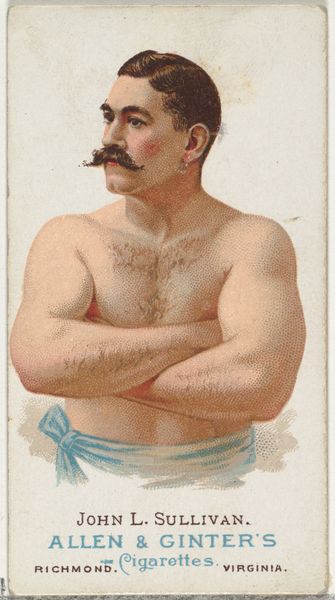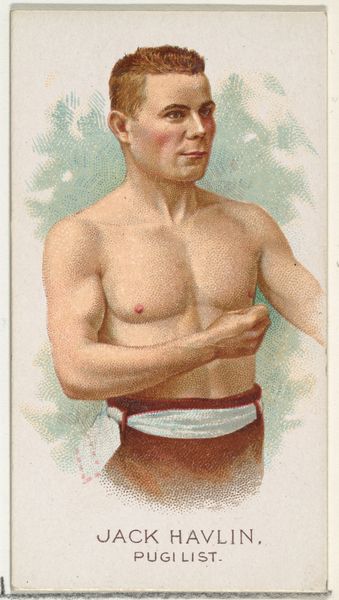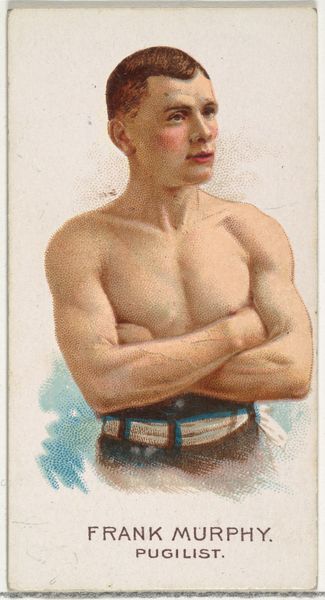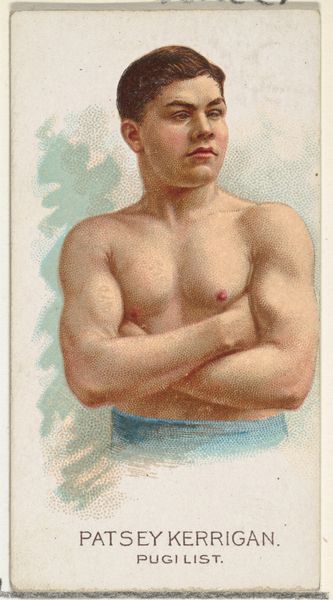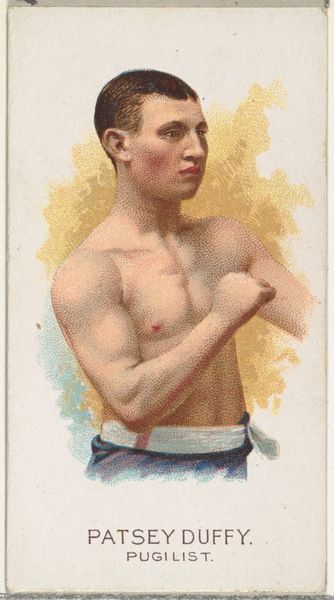
George La Blanche, Pugilist, from World's Champions, Series 2 (N29) for Allen & Ginter Cigarettes 1888
0:00
0:00
drawing, print
#
portrait
#
drawing
# print
#
portrait reference
#
animal portrait
#
men
#
animal drawing portrait
#
portrait drawing
#
watercolour illustration
#
facial portrait
#
athlete
#
portrait art
#
watercolor
#
fine art portrait
#
celebrity portrait
Dimensions: Sheet: 2 3/4 x 1 1/2 in. (7 x 3.8 cm)
Copyright: Public Domain
Editor: This is “George La Blanche, Pugilist,” a drawing printed for Allen & Ginter Cigarettes in 1888. It’s part of the "World's Champions" series, and it features a bare-chested boxer with a striking mustache. What's fascinating to me is the delicate rendering alongside the hyper-masculine subject matter. How do you interpret this work? Curator: I see a complex negotiation of power and representation. Think about the historical context: Cigarette cards were used as marketing tools, often valorizing certain ideals of masculinity and athleticism. This image, then, participates in a visual culture that's constructing ideas about the male body, strength, and even class. La Blanche, the pugilist, becomes a commodity, literally packaged with a product. What does it mean to sell an image of masculine power alongside an addictive substance? Editor: So, the card is less about La Blanche himself and more about selling a certain kind of image? Curator: Precisely. And who is the intended consumer? How might this image appeal to anxieties or aspirations related to masculinity? Consider the delicate watercolor technique against the rugged subject. Does this soften the edges of boxing, making it more palatable? Also, who has access to art like this? Who is excluded from owning it or identifying with it? Editor: It's making me rethink the relationship between celebrity, commercialism, and these older ideas of manliness. Curator: Right. These images helped to shape a dominant culture and solidify certain hierarchies. We can look to theory and history to help us unpack how art participates in these formations. Editor: This card becomes a fascinating window into those complexities. Thank you. Curator: It’s in questioning what’s represented, and *how*, that we see power relations come to light, isn’t it?
Comments
No comments
Be the first to comment and join the conversation on the ultimate creative platform.
